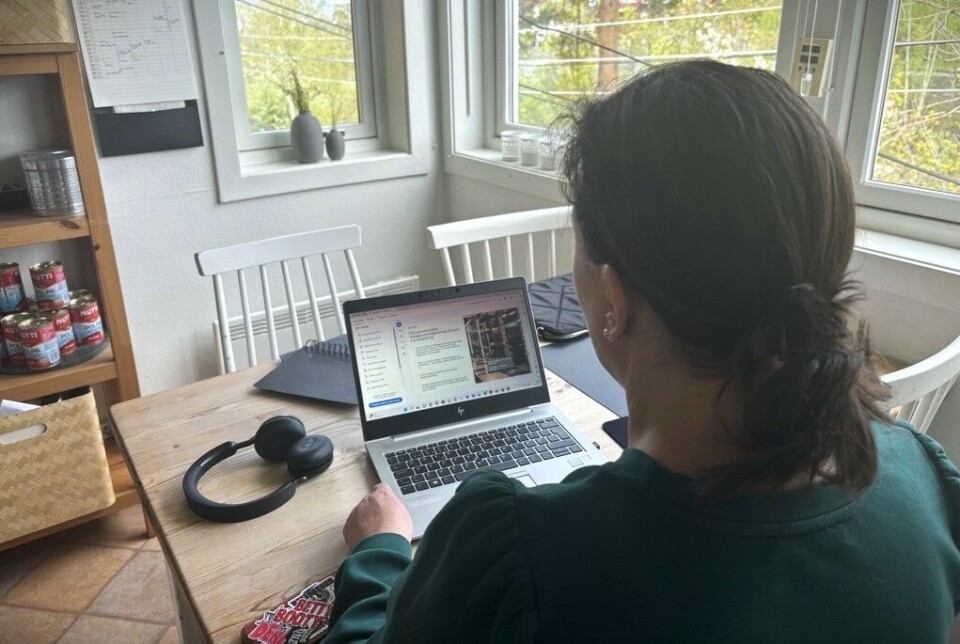THIS CONTENT IS BROUGHT TO YOU BY stami - National Institute of Occupational Health in norway- READ MORE

This is what we now know about working from home
Guidelines for working from home should consider both the benefits and drawbacks, according to a scoping review.
Following the Covid-19 pandemic, many have discussed various aspects of working from home. A variety of new arrangements have emerged. At the same time, we have known little about the impact of remote work on the ‘new normal’ working life.
Researchers at the National Institute of Occupational Health in Norway (STAMI) have now investigated this. They have recently published a scoping review to present existing knowledge on the associations between remote work, work environment, and health.
STAMI also conducted a similar review in 2021. The new report provides an updated overview of relevant research on the topic. Several Norwegian and Nordic studies are included in the knowledge base.
New findings support existing knowledge
During the pandemic, the complexities of working from home became apparent. Remote work appeared to have both positive and negative impacts on working conditions and well-being. STAMI researchers therefore urged businesses to be cautious when creating guidelines for such working arrangements.
The recommendation was to tailor arrangements to the nature of the tasks to be performed. Working from home may be particularly well suited for individual work tasks that require prolonged concentration but poorly suited for more collaborative tasks.
The advice was to balance the extent of remote work. It should neither be too much nor too little, allowing flexibility while avoiding work isolation. Furthermore, businesses may want to maintain functional office premises. There may be advantages to establishing remote work as a flexible opportunity rather than a forced work arrangement.
These are all important elements for creating a healthy and productive work environment that benefit both businesses and individual employees.
“The latest report supports our previous recommendations. It doesn’t give any indications that our assessments have to be changed. On the contrary, it strengthens them,” says Therese N. Hanvold. She is the director of STAMI.
A complex phenomenon
Håkon Johannessen, a researcher at STAMI, says that a clear finding is that we can no longer talk about remote work as a single, uniform factor.
"Rather, working from home can be compared to working in a diversity of other office solutions – with an intricate set of factors affecting the work environment,” he says.
Working from home appears to be a complex phenomenon. The complexity makes it challenging to draw an overarching conclusion. It is also challenging to develop simple and specific guidelines for such working arrangements.
However, the findings help to refine the guiding principles that should be used by businesses when organising work outside the company premises.
Both negative and positive consequences
Home offices can give employees better control over their work. It can also provide them with flexibility to balance the demands of work and private life.
Remote work is also associated with experiencing support from management. It also gives a strong sense of belonging to the organisation and feeling cared for.
At the same time, remote work is linked to negative factors such as experiencing increased workload and availability expectations, less support from colleagues, greater role ambiguity, and role conflict.
“The fact that flexibility can have both positive and negative consequences constitutes a flexibility paradox that one should be aware of,” says Hanvold.
A significant proportion of today's employees want to work from home to a certain extent. Many workplaces offer this opportunity.
It is important to note that although flexible working methods such as working from home often are perceived positively by employees, they can become challenging over time. How one addresses this problem will determine what is gained and what is lost for each company.
“Therefore, the focus should not solely be on whether or not remote work is beneficial to the work environment and occupational health. What matters is how the individual business plans, organises, and implements the use of such working arrangements,” she says.
Clarifying expectations
Going forward, it will be important for businesses to achieve a clear mutual understanding of the expectations and limitations associated with the use of home offices.
This will apply to areas such as where one works, time frames and working hours, expectations regarding work during illness, management follow-up, and common forums.
Clarifying who is responsible for setting these boundaries and how to organise remote work is also crucial.
Furthermore, businesses should strive to find the balance between offering flexibility to individual employees and maintaining good work environments, with regard to experience sharing, constructive collaboration, productivity, and continuity at the actual workplace.
“Decisions about working from home should be based on thorough considerations, with the goal of creating the best possible conditions for the business. And the use of home offices should be planned in a way that accounts for both the positive and negative factors in the working environment,” says Johannessen.
Reference:
Dalsbø et al. Oppdatering av forskningsstatus for arbeid hjemmefra, arbeidsmiljø og helse – en sonderende oversikt (Update on the research status for working from home, work environment, and health – an exploratory overview), Report from STAMI, 2024.
———
Read the Norwegian version of this article on forskning.no
More content from STAMI:
-
Technical issues at work may increase the risk of sick leave
-
Why many may struggle with tying shoelaces or buttoning shirts
-
Cellular offices contribute to job control
-
More people develop allergies to common preservative in makeup and household products
-
Are some employees better equipped to defend themselves against workplace bullying than others?
-
Automation in waste sorting facilities may be more damaging to workers' health





































